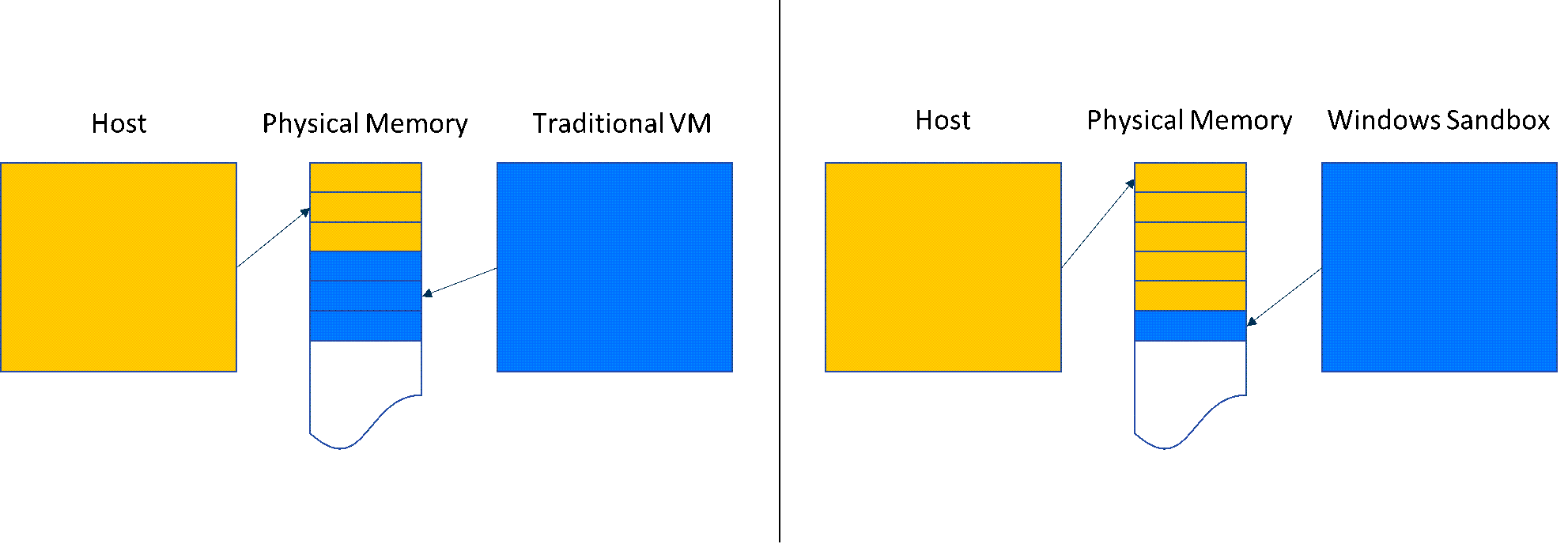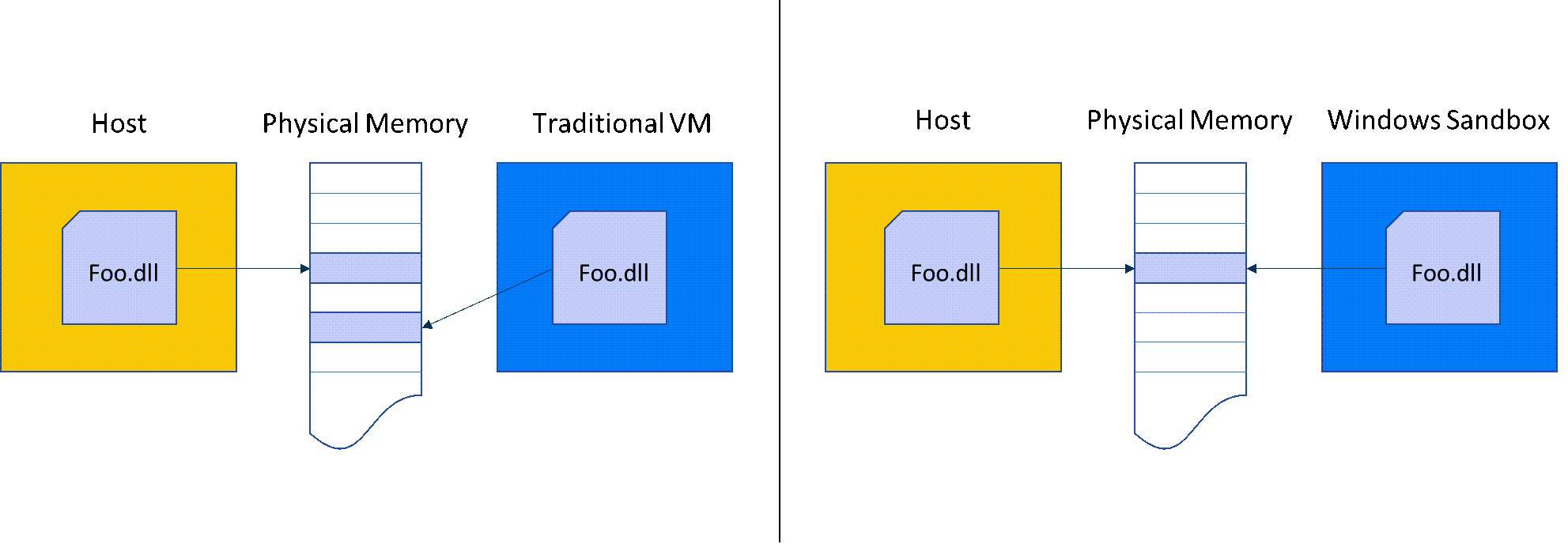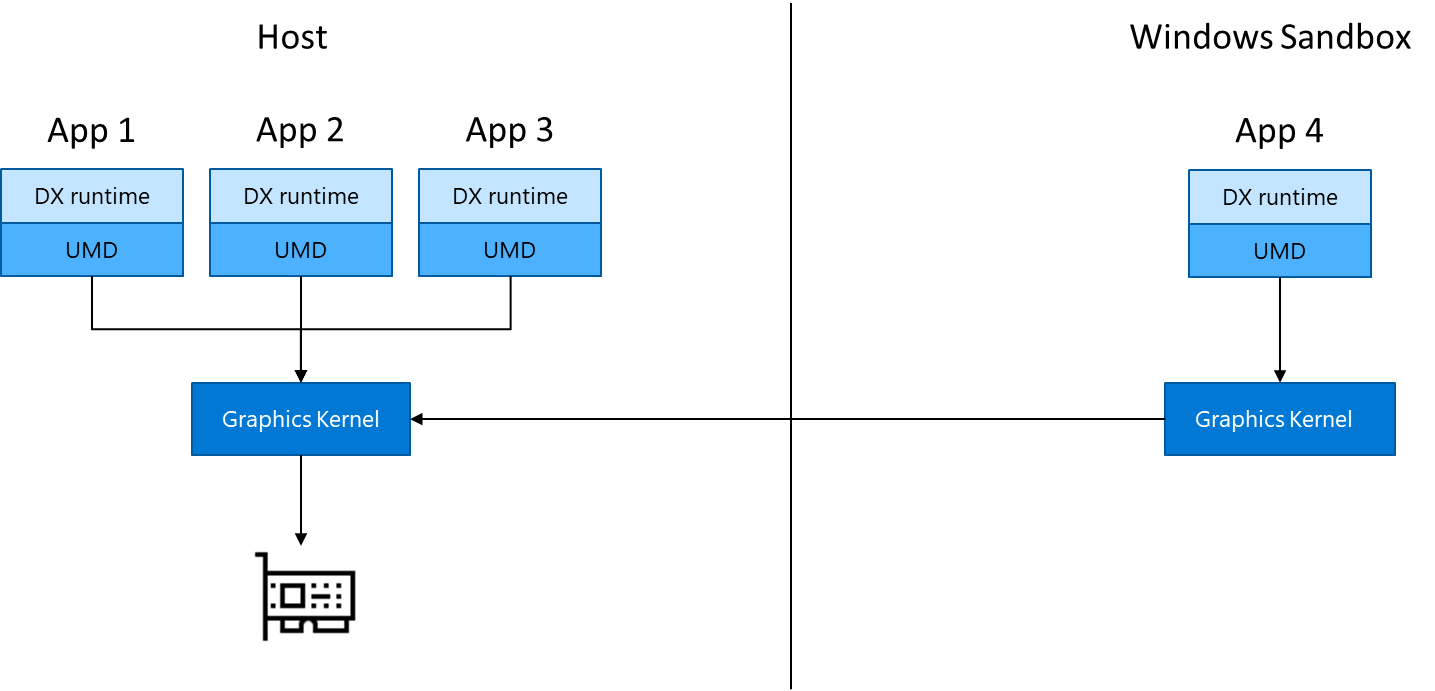Note
Access to this page requires authorization. You can try signing in or changing directories.
Access to this page requires authorization. You can try changing directories.
Windows Sandbox benefits from new container technology in Windows to achieve a combination of security, density, and performance that isn't available in traditional VMs.
Dynamically generated image
Rather than requiring a separate copy of Windows to boot the sandbox, Dynamic Base Image technology uses the copy of Windows already installed on the host.
Most OS files are immutable and can be freely shared with Windows Sandbox. A small subset of operating system files are mutable and can't be shared, so the sandbox base image contains pristine copies of them. A complete Windows image can be constructed from a combination of the sharable immutable files on the host and the pristine copies of the mutable files. With the help of this scheme, Windows Sandbox has a full Windows installation to boot from without needing to download or store an extra copy of Windows.
Before Windows Sandbox is installed, the dynamic base image package is stored as a compressed 30-MB package. Once installed, the dynamic base image occupies about 500 MB of disk space.

Memory management
Traditional VMs apportion statically sized allocations of host memory. When resource needs change, classic VMs have limited mechanisms for adjusting their resource needs. On the other hand, containers collaborate with the host to dynamically determine how host resources are allocated. This method is similar to how processes normally compete for memory on the host. If the host is under memory pressure, it can reclaim memory from the container much like it would with a process.

Memory sharing
Because Windows Sandbox runs the same operating system image as the host, it's enhanced to use the same physical memory pages as the host for operating system binaries via a technology referred to as "direct map." For example, when ntdll.dll is loaded into memory in the sandbox, it uses the same physical pages as those pages of the binary when loaded on the host. Memory sharing between the host and the sandbox results in a smaller memory footprint when compared to traditional VMs, without compromising valuable host secrets.

WDDM GPU virtualization
Hardware accelerated rendering is key to a smooth and responsive user experience, especially for graphics-intensive use cases. Microsoft works with its graphics ecosystem partners to integrate modern graphics virtualization capabilities directly into DirectX and Windows Display Driver Model (WDDM), the driver model used by Windows.
This feature allows programs running inside the sandbox to compete for GPU resources with applications that are running on the host.

To take advantage of these benefits, a system with a compatible GPU and graphics drivers (WDDM 2.5 or newer) is required. Incompatible systems render apps in Windows Sandbox with Microsoft's CPU-based rendering technology, Windows Advanced Rasterization Platform (WARP).
Battery pass-through
Windows Sandbox is also aware of the host's battery state, which allows it to optimize its power consumption. This functionality is critical for technology that is used on laptops, where battery life is often critical.